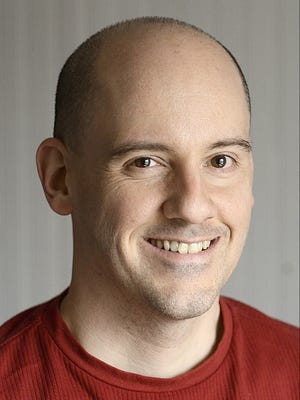Chris Schillig: Ridiculous conspiracy theory is only the tip of the iceberg

Whatever QAnon supporters were hoping would happen this week, didn’t.
Hundreds of believers gathered Tuesday at Dealey Plaza in downtown Dallas in anticipation of John F. Kennedy Jr.’s triumphant return, despite the fact that he’s been dead since 1999.
The Dallas Morning News, trying to make sense of nonsense, explained the gist of this latest QAnon conspiracy. In short, followers anticipated that Donald Trump would be reinstated Tuesday as president. Who was going to perform this unconstitutional act was unspecified, but it had connections with an obscure 1871 law that QAnon supporters mistakenly believe transformed the federal government into a private corporation.
This past/present “President” Trump would then pass the baton of the executive branch to JFK Jr. so that he, Trump, could ascend to some extra-constitutional, overlord capacity.
Readers may wonder what happened to the followers’ conviction when this Kennedy plot refused to twist. Well, dismiss any scenario where they return home, sadder and wiser, shades of the Wedding Guest in “Rime of the Ancient Mariner.”
Instead, at least one adherent had already prepared in advance for the failed materialization. She told the newspaper that if JFK Jr. didn’t show, it indicated only that some part of the plan had gone temporarily awry and would be postponed for now.
In other words: Shoulder-shrug. Wait for the parousia again tomorrow.
It would be easy for the more sensible among us to shrug our shoulders, as well. Events like this are evidence of an appalling lack of mental health services in the United States, and also serve as contemporary examples of Charles Mackay’s “Extraordinary Popular Delusions and the Madness of Crowds.” Nothing new there.
But it cuts deeper than that.
Obviously, the whole “JFK Jr. will rise from the dead” theory is patently impossible. However, like many conspiracy theories, it rests on the bedrock of a scenario that is moderately more plausible, if only because the principal actor is still alive. In other words, the belief that Donald Trump won the 2020 election.
Make no mistake: Trump lost. This has been affirmed again and again, first by the initial tally of votes and the certification of same, and then by a series of judges, state election officials on both sides of the aisle, Trump’s own former attorney general, and a small army of election-security experts.
Even the sham recount in Arizona, which shouldn’t be taken as conclusive evidence of anything because of protocol violations, couldn’t magically cause pro-Trump ballots to materialize where none existed.
Still, all this ironclad proof hasn’t stopped 38 percent of Americans from clinging to the belief that Trump won. It didn’t reassure 59 percent of Republicans who doubted their votes would be counted accurately in the most recent election, based on a recent NBC News poll.
These aren’t people who would show up in Dealey Plaza to anticipate the resurrection of a dead Kennedy. Yet many among them concede the necessity of violence to “restore” the nation, express a willingness to restrict the voting rights of others, embrace a widely debunked myth called White Replacement Theory, and support candidates who vow to slay a boogeyman called Critical Race Theory in our public schools.
Therefore, focusing only on the most egregious antics of people deluded enough to wait for a Trump/John-John ticket is a mistake, as these are just the most visible signs of an insidious dry rot running through the country.
Dealey Plaza and similar events are a distraction. The real danger is a strain of radical anti-constitutionalism in too many of our friends, family, neighbors and coworkers, supported and strengthened by far-right newscasts and social media algorithms that prioritize involvement over accuracy, and egged on by crass politicians who see fanciful culture wars as a way to secure votes.
Worry less about the crazy you can see. Worry more about the crazy you can’t.
Reach Chris at chris.schillig@yahoo.com, and @cschillig on Twitter.

